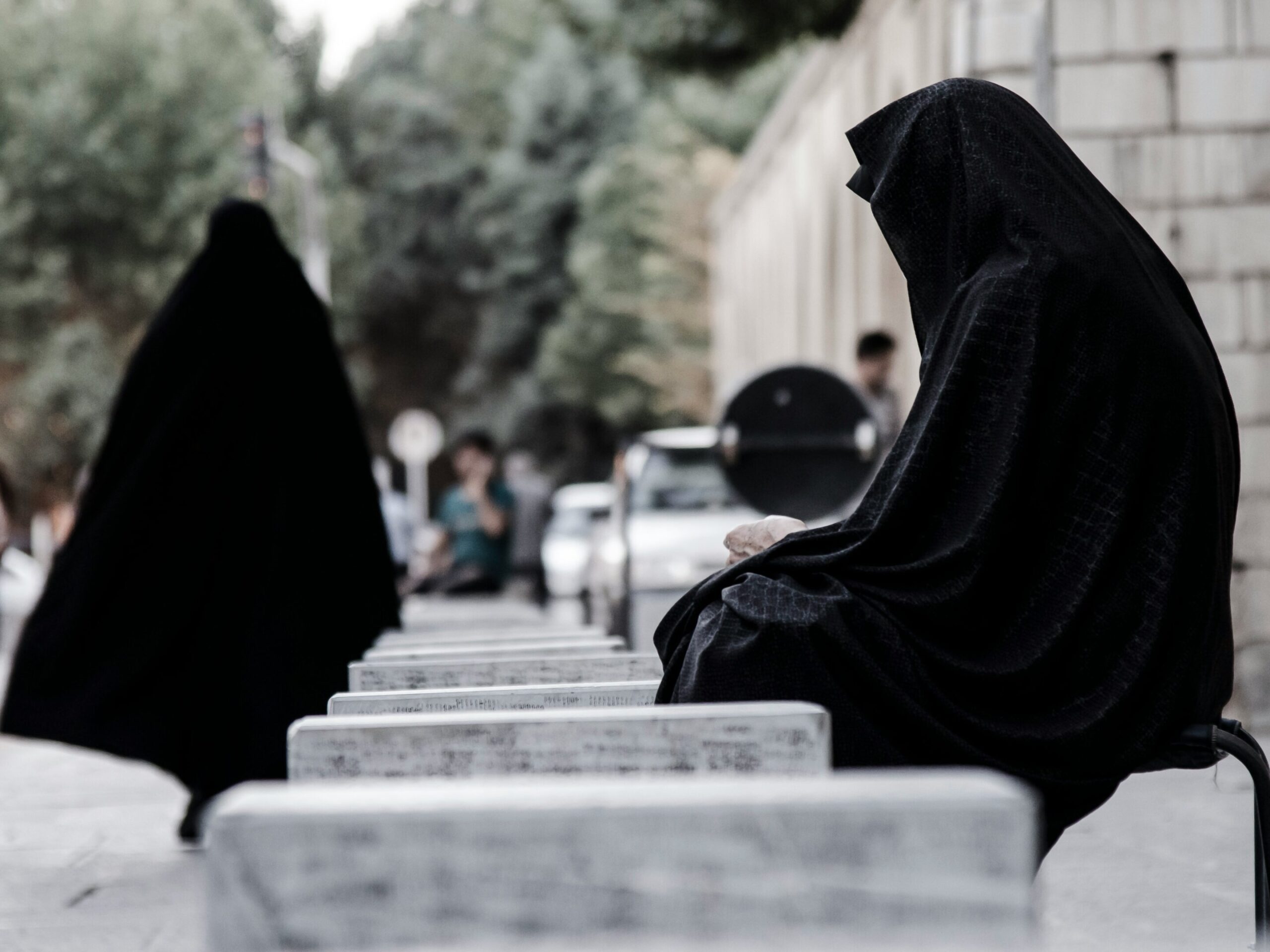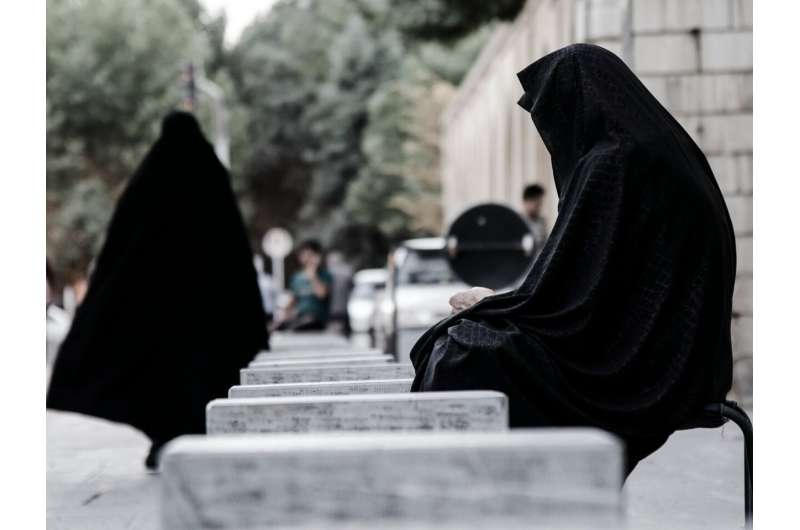

Since returning to power three years ago, the Taliban have been enforcing oppressive laws that violate people’s freedoms and human rights, especially those of women and girls.
But a newly passed “vice and virtue” law goes further. It is among the most repressive and discriminatory measures ever enacted by the Islamist fundamentalist group.
As a human rights activist from Afghanistan, and as a scholar working on Afghanistan since 2002, we have been documenting the Taliban’s attacks against women for decades.
The new law seeks to completely silence women in public. They are prohibited from speaking, singing or praying aloud. The law also attempts to literally erase them from view, ordering women to cover every part of their body and face in public.
The edict suppresses most of women’s political, civil and human rights guaranteed under international law. And if women resist, it orders the use of violence to repress them.
A return to power
Generations of women who grew up in Afghanistan over the past 20 years, and who are now living in Afghanistan and abroad, have responded to the vice and virtue law with disbelief and horror.
After 2001, when the Taliban were removed from power, millions of Afghan women and girls went to school. They became professionals—lawyers, artists, athletes, engineers and human rights leaders. They voted in large numbers and served in all areas of government.
But the Taliban returned to power in August 2021 after waging a violent war against the United States and Afghanistan’s NATO-backed government. And they have aggressively rolled back two decades of advancements in women’s rights.
Since then, the Taliban have issued over 100 decrees and directives that violate women’s and girls’ rights under international law and Afghan national law.
They include more than 20 increasingly restrictive directives. Among other things, they ban women and girls from attending school beyond the sixth grade, denying 1.5 million girls and young women access to education. Afghanistan is now the only country in the world to ban girls from both secondary school and university.
The mandates have also barred women and girls from employment in the United Nations and other nongovernmental organizations. This has made it exceptionally difficult for humanitarian aid agencies to reach Afghan women and children in dire need of assistance, particularly in public health.
The fundamentalist group, additionally, prohibits women and girls from traveling, going to parks or being in public without a male relative accompanying them. And it bars women and girls from gathering to protest this treatment.
Punishments include torture and rape
To enforce these violations, the Taliban dissolved the Ministry of Women’s Affairs just weeks after assuming power and replaced it with the Ministry of Virtue and Vice, whose morality police violently enforce the measures.
Punishments for those who protest the laws include beatings, detention, torture, rape and death. Women protesters have reported being beaten and tortured with electric shocks. The Taliban have reportedly raped girls and women in jail, including filming the gang rape of an Afghan woman activist jailed for protesting.
Women, simultaneously, have no means of seeking justice. The Taliban have abolished the Afghanistan Independent Human Rights Commission. The commission investigated and reported about alleged extrajudicial killings, rape, torture, illegal detention and inhuman treatment and violence against women, among other rights violations.
The Taliban, additionally, have eliminated other mechanisms for protecting women, including by shuttering all women’s shelters and domestic violence centers.
‘Duty-bound to hide her voice’
The new vice and virtue law further breaches women’s rights.
Article 13, for example, dictates that if a woman leaves her home, she “is duty-bound to hide her voice, face and body.”
It orders women’s voices to be completely silenced. They are not to speak, sing, laugh, cry, pray or recite the Quran in public. The measure instructs enforcers to prevent “the sound of a woman’s voice or any music emanating from any gathering or from the home.”
The measure also defines the hijab, a head covering worn in public by some Muslim women, in the most restrictive terms possible. No longer just a head covering, the hijab is extended to a full body covering and veiling of the face. Women are also prohibited from making eye contact with men.
This runs against Afghan tradition. Traditional Afghan attire for women is brilliantly colored, elaborately decorated, with long sleeves, full skirts and pants underneath.
Wider restrictions
The vice and virtue measure also takes aim at the general population.
It censors people’s access to media and dictates punishments for broadcasting music, videos, photographs or films of humans or animals. Article 22 forbids Afghan women and men from befriending non-Muslims or assisting them in any way.
The law gives overwhelming power to religious inspectors, called “enforcers.”
Enforcers can act based on observation and hearsay, or the testimony of two people.
And there is a list of punishments that enforcers can apply. They include intimidation, verbal punishment and the confiscation and destruction of property.
Repeated violations by individuals or groups can lead to prosecution before a court. Based on the Taliban’s erroneous interpretation of Sharia criminal law, the vice and virtue law allows for long-term imprisonment, stoning, flogging, execution and being thrown from a mountain.
Shortly after the measure was enacted, for example, enforcers severely assaulted two women for going to the city market.
The vice and virtue mandate has dashed many Afghans’ hope of real change in the Taliban’s repressive policies. And it has cast serious doubt on how successful the international community has been in its efforts to improve the status of Afghan women.
In recent high-level talks with the Taliban in Doha, Qatar, U.N. and U.S. officials caved on the Taliban’s demands for the complete exclusion of Afghan women from the talks. Just weeks later, the Taliban, seemingly emboldened, announced their new virtue and vice law.
These human rights violations run counter to religion and culture in Afghanistan, where women have a long history of fighting for their rights.
Today, there is perhaps no other country in the world that uniformly violates the human rights of women and girls to the level of the Taliban. But it’s not only the problem for the women and girls in Afghanistan. The protection of human rights and human dignity is a responsibility that falls to each one of us.
Provided by
The Conversation
This article is republished from The Conversation under a Creative Commons license. Read the original article.![]()
Citation:
How the Taliban’s new ‘vice and virtue’ law erases women by justifying violence against them (2024, September 30)
retrieved 1 October 2024
from https://phys.org/news/2024-09-taliban-vice-virtue-law-erases.html
This document is subject to copyright. Apart from any fair dealing for the purpose of private study or research, no
part may be reproduced without the written permission. The content is provided for information purposes only.

